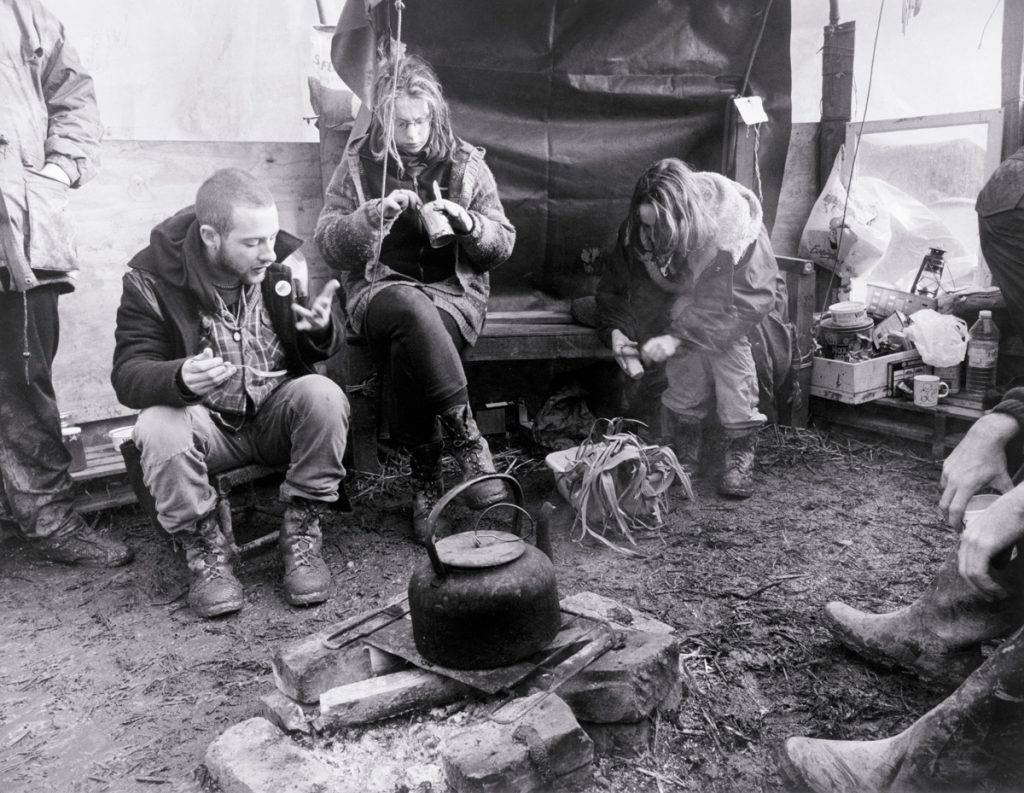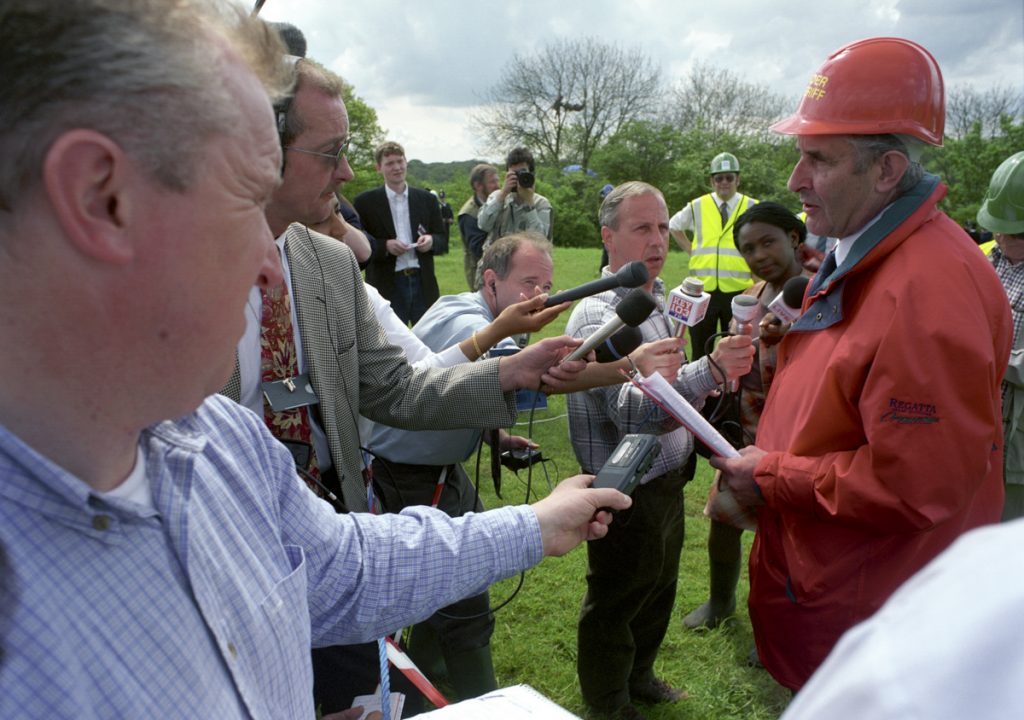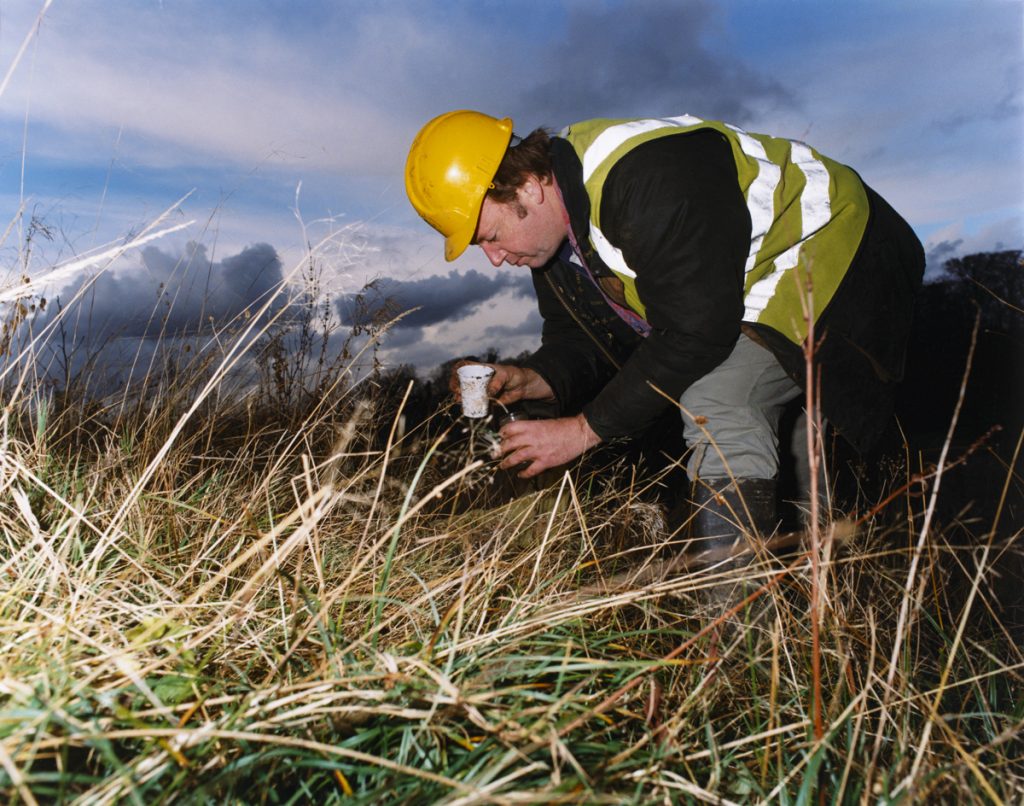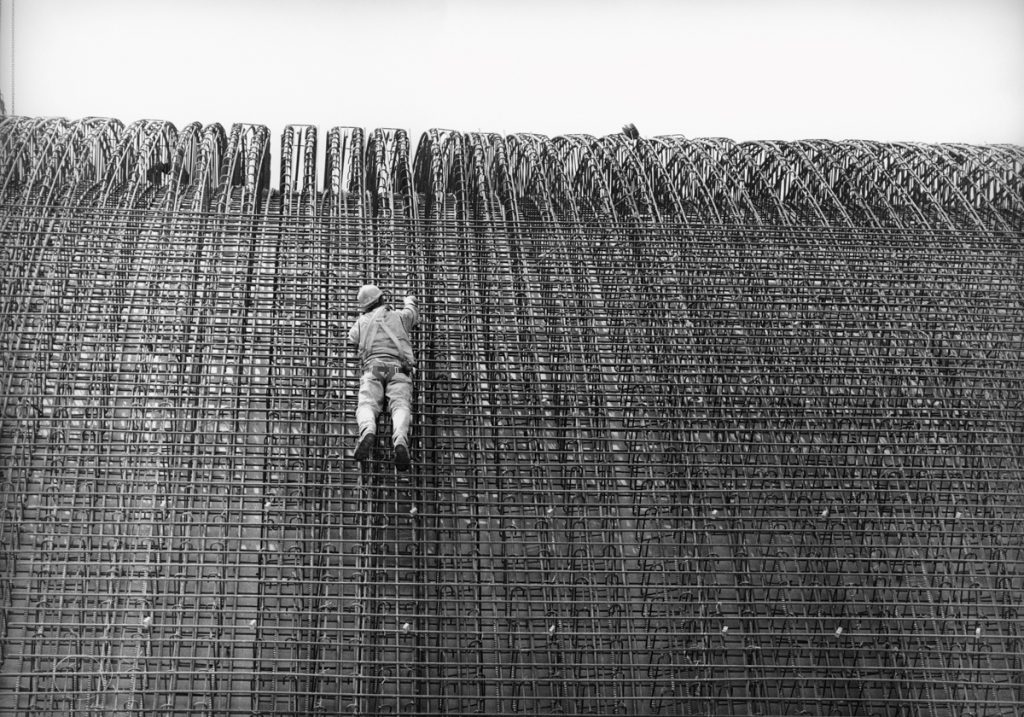The book that never happened
[This is one of series of blogs to promote my campaign to produce a 30-year retrospective book.]
I was photographing the construction of Manchester Airport’s second runway at the same time (1997-2000) as I was documenting The Lowry at Salford Quays. The projects couldn’t have been more different.
The Lowry couldn’t come soon enough. It was to be the catalyst for the regeneration of the redundant docks. It was to spearhead Salford’s economic recovery.
Before the first bulldozer had set caterpillar tracks on the Bollin Valley, the second runway was already mired in controversy. The wider business case may have been sound but the environmental impact was immense. Despite reassurances to relocate endangered amphibians and colonies of bats, build new ponds and re-establish habitats, the project was targeted by environmental protestors.
My first roll of film for ‘R2’ then, was not of hi-vis-clad workers or huge earthmoving machinery, but of the makeshift camps the protestors had set up just off the A538.
As the Airport’s ‘official’ runway photographer, I could have been regarded as ‘the enemy’. Instead I explained that my documentation should include, in my view at least, everyone’s perspective, and I was left to photograph the camp and its occupants without any hassle.

It was rumoured that ‘Swampy’ – recently made famous as the last tunnelling protestor to be evicted from the A30 site in Devon – was also making tunnels here, and living in one of the rapidly-constructed treehouses, although I never saw him.
Within weeks the camps had been surrounded and an eviction by the Under-Sheriff of the County Sheriff’s Office was underway. Now regarded as a member of the media, I was required to attend the Main Reception, Accreditation and Briefing Area before each of my visits. From here journalists, TV crews and ‘snappers’ were escorted to Controlled Press Points – a pen in a field – from where we could see very little but awaited an occasional briefing from the Under-Sheriff.

Following a spirited stand from the ‘trespassers’, the area was eventually cleared and construction work started. For many months the site was characterised by mile upon mile of low plastic fencing which ‘caught’ frogs and newts before they could be re-housed elsewhere.

I found working on the runway project difficult. Logistically it was hard. I’d have to drive to the works compound and wait for someone to give me a lift to the part of the massive site that I wanted to document. And wading through mud for much of the day was no fun.
Aesthetically it was unrewarding too. There was nothing for me to get my teeth into. Compared to The Lowry with its intriguing angles and shapes, the runway was one-dimensional. The only respite being the construction of a tunnel to allow the River Bollin to continue its course across the site. At last, something tall.

My client – the PR department at the Airport – commissioned a writer to provide the text for a proposed book that would celebrate the runway’s completion. And my designer friends at Hemisphere made a good job of putting it all together. Had there not been a delay, the book – The Long Haul – would have been printed by August 2001. But there was a delay, maybe two, and the schedule got pushed back to October. And then 9/11 happened and everyone concerned with airports obviously had more pressing priorities.
My R2 pictures have never been published.